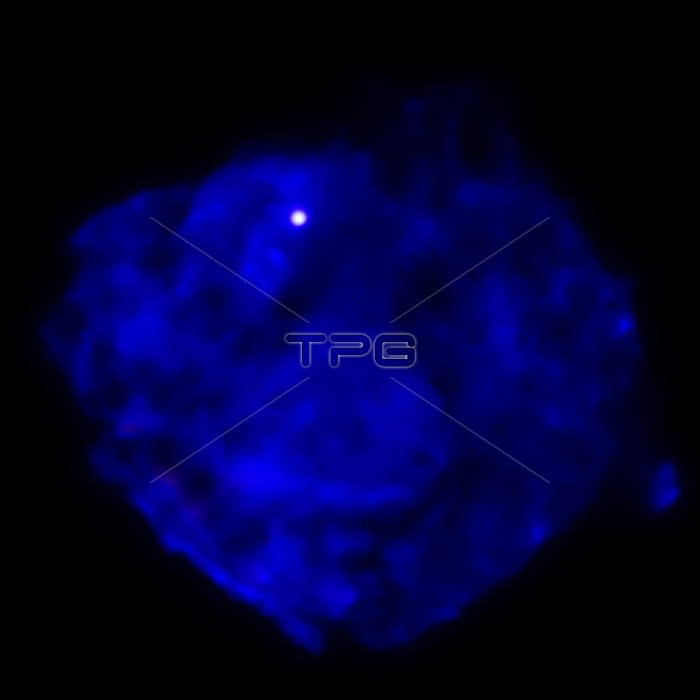
N49, the aftermath of a supernova explosion in the LMC. A new long observation from NASA's Chandra X-ray Observatory reveals evidence for a bullet-shaped object being blown out of a debris field left over from an exploded star. The detection of this bullet shows that the explosion that destroyed the star was highly asymmetric. The bullet is traveling at a high speed of about 5 million miles an hour away from a bright point source in the upper left part of N49. This bright source may be a SGR, a source that emits bursts of gamma rays and X-rays. A leading explanation for these objects is that they are neutron stars with extremely powerful magnetic fields. Since neutron stars are often created in supernova explosions, an association between SGRs and supernova remnants is not unexpected. However, the new Chandra data also shows it is possible that the bright X-ray source actually lies beyond the remnant and is projected along the line of sight. Optical data from the HST shows bright filaments where the shock wave generated by the supernova is interacting with the densest regions in nearby clouds of cool, molecular gas. Release date May 24, 2010.
| px | px | dpi | = | cm | x | cm | = | MB |
Details
Creative#:
TOP22313816
Source:
達志影像
Authorization Type:
RM
Release Information:
須由TPG 完整授權
Model Release:
N/A
Property Release:
No
Right to Privacy:
No
Same folder images:

 Loading
Loading